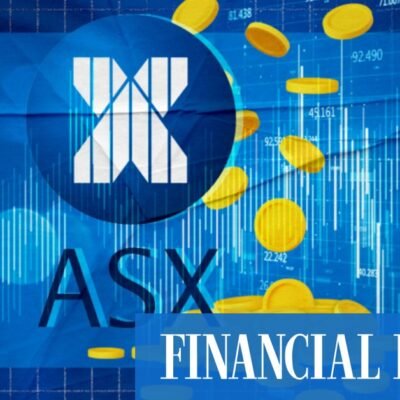This scene shows a chain falling apart under strain of force. The chains central links are breaking apart and many small fragments are blowing vertically out. The scene is isolated on a dark patterned background.
getty
Investors are flocking to corporate breakups as they become increasingly popular. Brokers are calling them “easy catalysts.” The financial media is packaging them as the sum-of-the-parts unlock that every portfolio needs. Being 35 years in the business and a worldwide expert in this field, it’s a familiar cycle: hype, inflows, and disappointment.
We’ve seen how this movie ends. Take Kraft Heinz. The 2015 merger between Kraft and Heinz was marketed as a prime example of synergy and shareholder upside. Wall Street sold the narrative hard: iconic brands, scale efficiencies, and Warren Buffett’s endorsement. Investors piled in, convinced they were buying the easiest trade in the market. The reality? A value trap. Synergies evaporated, growth never materialized, and years later the stock is still trading far below its debut highs. Anyone who bought into the consensus found the “easy win” story to be a slow and painful experience as well as anything but a win. Breakups don’t automatically create alpha. Follow the herd, and most will destroy it.
Why Investors Get Corporate Breakups Wrong
Wall Street never misses the chance to dress up a separation as the next sure path to shareholder value. The story is always the same. A company announces a spinoff, analysts push the “sum-of-the-parts” angle, and media outlets repeat the line that unlocking value is all but guaranteed. The cycle is predictable. Enthusiasm builds on announcement day, shares trade up, and money pours in. Then reality sets in. Most investors have arrived too late. They buy once the obvious upside is priced in, sell before structural inefficiencies have had time to play out, or end up holding the weaker company.
Kraft Heinz is the warning. It was marketed as the perfect marriage of scale and brand power, a deal that would deliver years of growth and efficiency. The opposite happened. Synergies never showed up, growth stalled, and the stock sank. Investors who relied on the simplistic narrative encountered a challenging lesson: headlines do not guarantee returns.
Breakups do not automatically create alpha. In fact, most destroy it for those who follow the crowd. The winners understand the mechanics, the behavior, and the catalysts beneath the surface.
Corporate Breakups: The New Cycle
Breakups are back in fashion. GE’s dismantling has become the blueprint, with each separation unlocking more value and putting pressure on other boards to follow. Kellogg’s split into Kellanova and WK Kellogg drew similar headlines. Intel’s potential plan to separate its foundry business has investors buzzing. Boeing is under pressure to consider restructuring after years of crisis. The theme is clear: corporate America is being forced to simplify.
Kraft Heinz Post Merger
Barchart
The tailwinds are strong. Activist investors are demanding action. Capital markets are rewarding focus over scale. Boards that have failed to deliver growth are facing louder calls to unlock value by breaking apart sprawling structures. The pressure is real, and more companies will take the path of separation. But while boards may see breakups as a quick solution, investors should be cautious. High debt loads and a more expensive cost of capital mean the risk of failure has never been higher. Splitting companies under pressure often creates fragility rather than strength. Just because breakups are back does not mean they are all good. Many will fail. My company, The Edge identified that looking at 25 years of data, 30% of spinoffs are flat or negative in terms of performance in their first year. Reliance on headlines can lead investors to make unfavorable trade decisions. Those who understand the structure and the timing will have the advantage.
Mechanics Investors Miss Behind Corporate Breakups
The hidden mechanics of breakups are where most investors stumble. On the surface, a spinoff looks simple. One company becomes two, and shareholders receive stock in each. Beneath that, the forces driving price action are complex and rarely discussed in broker reports or media write-ups.
- The first force is forced selling. Index funds, ETFs, and managers with strict mandates often cannot hold the smaller or less liquid side of a spinoff. They dump shares regardless of value. That creates downward pressure and temporary dislocations. To those who are ill-prepared, it appears as though the business is facing difficulties. For those who are informed, this can be an opportunity.
- The second force is the quality divide. Every breakup produces a stronger and a weaker entity. The stronger one gets the crown jewel assets. The weaker one is often saddled with debt, legacy operations, or unattractive segments. Owning the wrong side is where investors lose money. The headlines rarely make this distinction clear.
- The third is timing. The day a spinoff is announced is not the day value is realized. In many cases, the best entry point is months later, when selling pressure peaks and fundamentals begin to emerge. Investors who rush in on announcement day often buy at inflated levels.
Without understanding these mechanics, most participants are just guessing. Breakups do not reward guesses. They reward patience, discipline, and the ability to see beyond the press release.
Winners and Losers
The best way to see the risks and opportunities of breakups is to study the track record. History shows a clear divide between those that create structural alpha and those that erode value.
GE is the standout winner. For years, it served as a prime example of conglomerate decay, a bloated structure with an excessive number of moving parts. Under Larry Culp, GE committed to separation and executed with discipline. Each unit was positioned with the right capital structure, the right leadership, and the right timing. Investors who understood the sequence of catalysts captured extraordinary gains. The GE breakup has returned multiples of what most thought possible.
On the other side is Kraft Heinz. Wall Street referred to the merger’s announcement as a generational play on iconic brands and scale. Instead, it was the beginning of a long decline. Synergies failed to materialize, growth evaporated, and debt weighed the business down. Investors who trusted the easy narrative lost money. It is a warning that size and headline appeal do not guarantee returns. An example of this is Kellogg’s split into Kellanova and WK Kellogg. The media hype was strong, but the returns have been mixed. The stronger piece carries the growth story. The weaker one struggles under legacy baggage. The lesson is simple. Breakups are not universally applicable. Some deliver structural alpha. Others destroy value. Winners know which side has the crown jewels and which is being set up to fail.
The Edge Proposition
This is where The Edge comes in. For more than fifteen years we have focused on corporate breakups and other situations like these, not by chasing headlines but by dissecting the mechanics that others ignore. Breakups and spinoffs are fertile ground for alpha, but only if you understand what drives the dislocation.
Our approach starts with behavior. Forced selling, index deletions, and mandate-driven exits create opportunities that are invisible to those relying on broker research. We track insider behavior closely. When management teams step in with their money, it signals more than confidence. It shows alignment now it matters most.
Capital allocation is another filter. Many boards use spinoffs to dump debt or legacy assets onto unsuspecting shareholders. We model the post-spin balance sheet to determine which side of the transaction will prosper and which side will suffer.
Timing is critical. Our research indicates that the most successful entries typically occur months after separation, once indiscriminate selling has reached its peak and the fundamentals of each business begin to stand independently. Patience pays off in this situation. The results speak for themselves. Our Breakup Basket has captured strong returns across multiple names in 2025, with gains of thirty to sixty percent on select situations. This was not because we blindly followed the consensus, but rather because we anticipated where the consensus would be incorrect.
Corporate Breakups Are Back, But Are You Ready?
Corporate breakups are back, and investors are rushing in. The media will hype them, brokers will package them as easy wins, and the crowd will follow. Most will buy too late, sell too early, or own the wrong side. That cycle never changes. What does change is the opportunity for those who are ready. At The Edge, we study the mechanics that matter: structure, behavior, and governance. Breakups create structural alpha, but only for those positioned ahead of the herd. The question isn’t whether breakups are coming. They are here. The real question is, are you ready?






